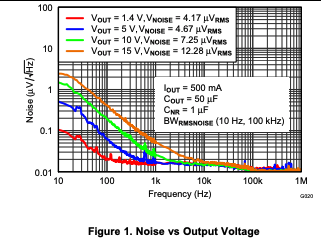Other Parts Discussed in Thread: TLV61046, TPS7A47,
Good evening....
I have an application that deals with 16.5V, extremely low level signals and large gains. The datasheet for the above subject shows much PSRR data for Vout = 5V and some data to support Vout =1.2V but nothing to support higher voltages. Can you please share with me some internal data for PSRR and noise with respect to voltages up at Vout = 16V with light load 3.5mA? Also the EVM doesn't seem to support the high voltages, is there a reason that the EVM doesn't have provisions to set the output voltage to say 15V for testing purposes?
Thank you
Steve


